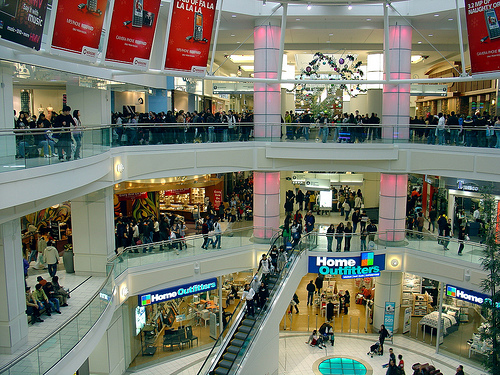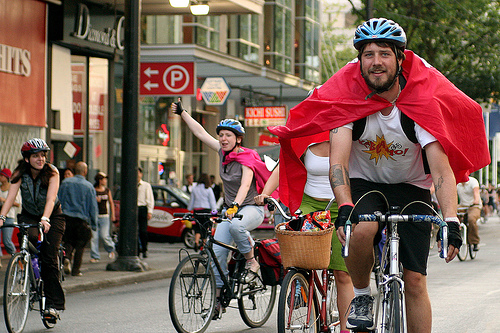The other 20 percent
 Metrotown on Boxing Day, 2006. Photo by Oran Viriyincy via Flickr.
Metrotown on Boxing Day, 2006. Photo by Oran Viriyincy via Flickr.
I had an interesting time at Metrotown on Friday. Rows upon rows of sequined plastic iPhone cases, “50/50” t-shirts at American Apparel as if 50% polyester were a selling point, fluorescent Nikes, fake culture at Chapters induced by jazz at Starbucks, and dangerous high-heeled shoes left me feeling disconnected and a little cynical. I grew up being called weird, but looking around at this highly materialistic, throw-away, plastic culture truly made me feel weird and unable to understand its fads.
The food services produce disposable dining ware (read: garbage), poor quality food and a shockingly large crowd at McDonald’s. As my friend jokingly suggested sharing a $1.39 recipe-for-bloating, I stood there waffling between despair and a holier-than-thou attitude. I’ve become so distanced from that 12-hour a day, 7-days-a-week consumerist culture that being surrounded by it leaves me shell-shocked.
Many people who are in their early days of shrinking their environmental footprint would probably hang their heads and wonder what the point is of doing this when there are 10 times as many people doing nothing. But if you’re doing something for the planet and future generations, it’s because you understand that even at an individual level, your actions matter and by doing nothing, you’ll be contributing to the problem instead of solving it.
That still leaves that 20% that will never jump on the bandwagon, so how do we deal with those people? Or with today’s teenagers who, in 5 to 10 years when they’re my age, will be more conscious (hopefully) but are currently consuming and tossing like that’s a fashion trend in itself? The answer is corporate responsibility.
Being conscious of a product’s life cycle is key to preserving resources and preventing more waste from entering the landfill. At the scale at which we currently produce mass consumer items, they should, without much cost increase, be able to be created from biodegradable and recyclable/recycled materials (Simple shoes); be made better quality to last longer (MEC, champions of responsibility); and be repurposed for something else (like gum tins and milk jugs). So at least when 14-year-old Ashley throws out that busted $8 necklace, it won’t be wallowing in a landfill for a thousand years, or she can donate the beads for another girl to create a new piece of jewellery. For items like appliances and furniture, take-back programs are used by some eco-smart companies. Packaging is also an incredibly huge culprit, particularly for tech products, and must be rethought now.
If you live in Metro Vancouver, come out on Sunday to learn about a family in the US who took the concept of a low environmental impact to extremes. No Impact Man screens tomorrow from 3 – 6pm at the Waldorf Hotel.
Metro Vancouver, our regional authority, offers these resources on reducing waste by shopping mindfully and reusing, recycling and donating your stuff in the region.
 This daily green blog is in support of David Suzuki’s 75th birthday fundraising campaign put on by the David Suzuki Foundation. Please help me out by sponsoring me online now.
This daily green blog is in support of David Suzuki’s 75th birthday fundraising campaign put on by the David Suzuki Foundation. Please help me out by sponsoring me online now.
Note: I am writing solely on my own behalf, and do not claim to represent the David Suzuki Foundation or its views here.


